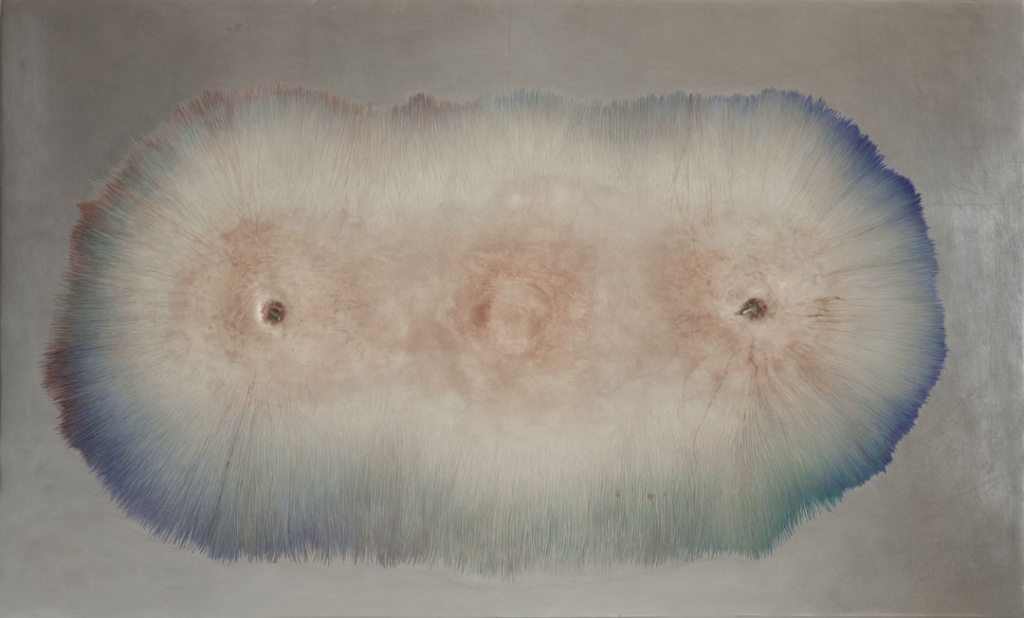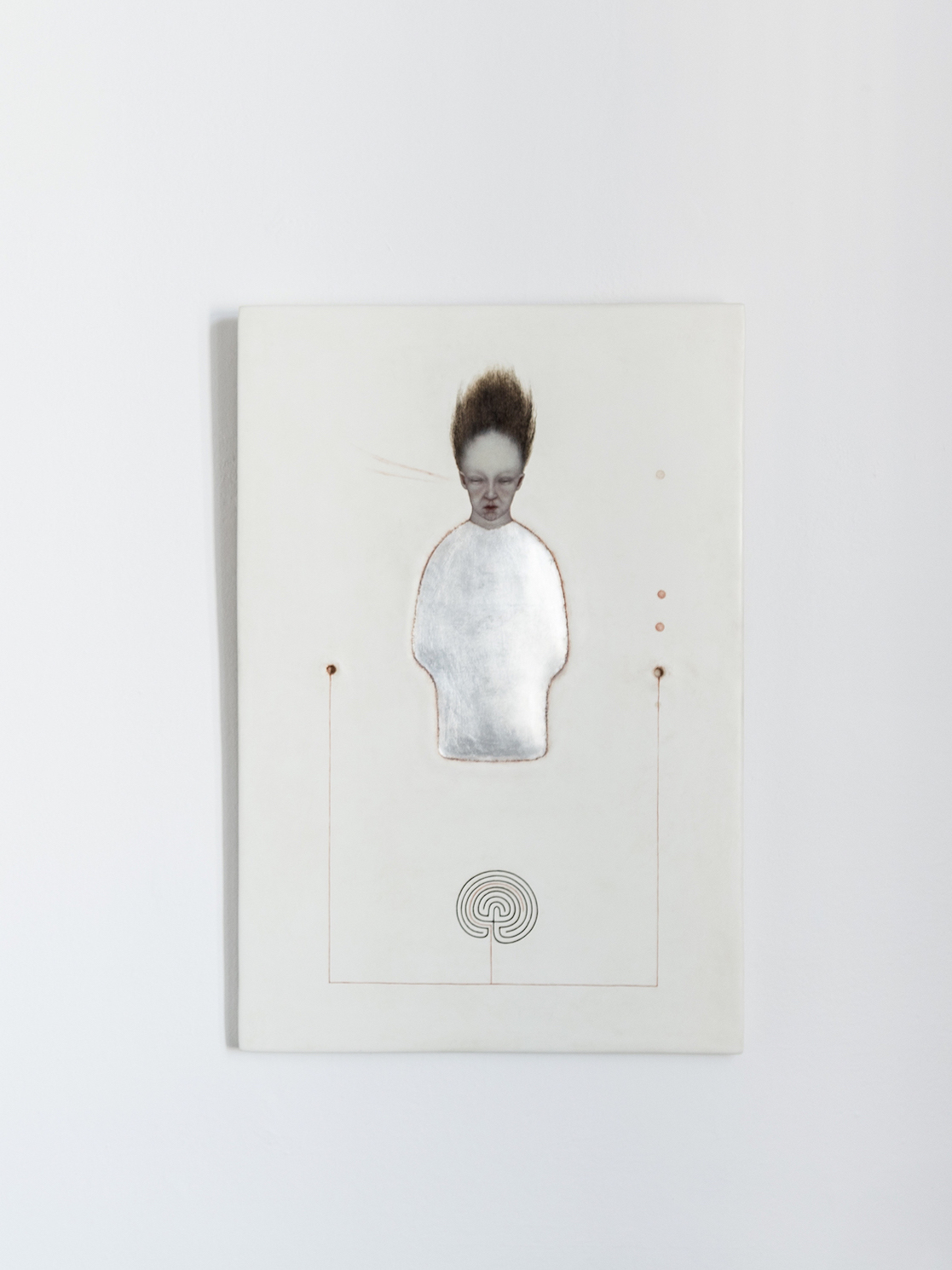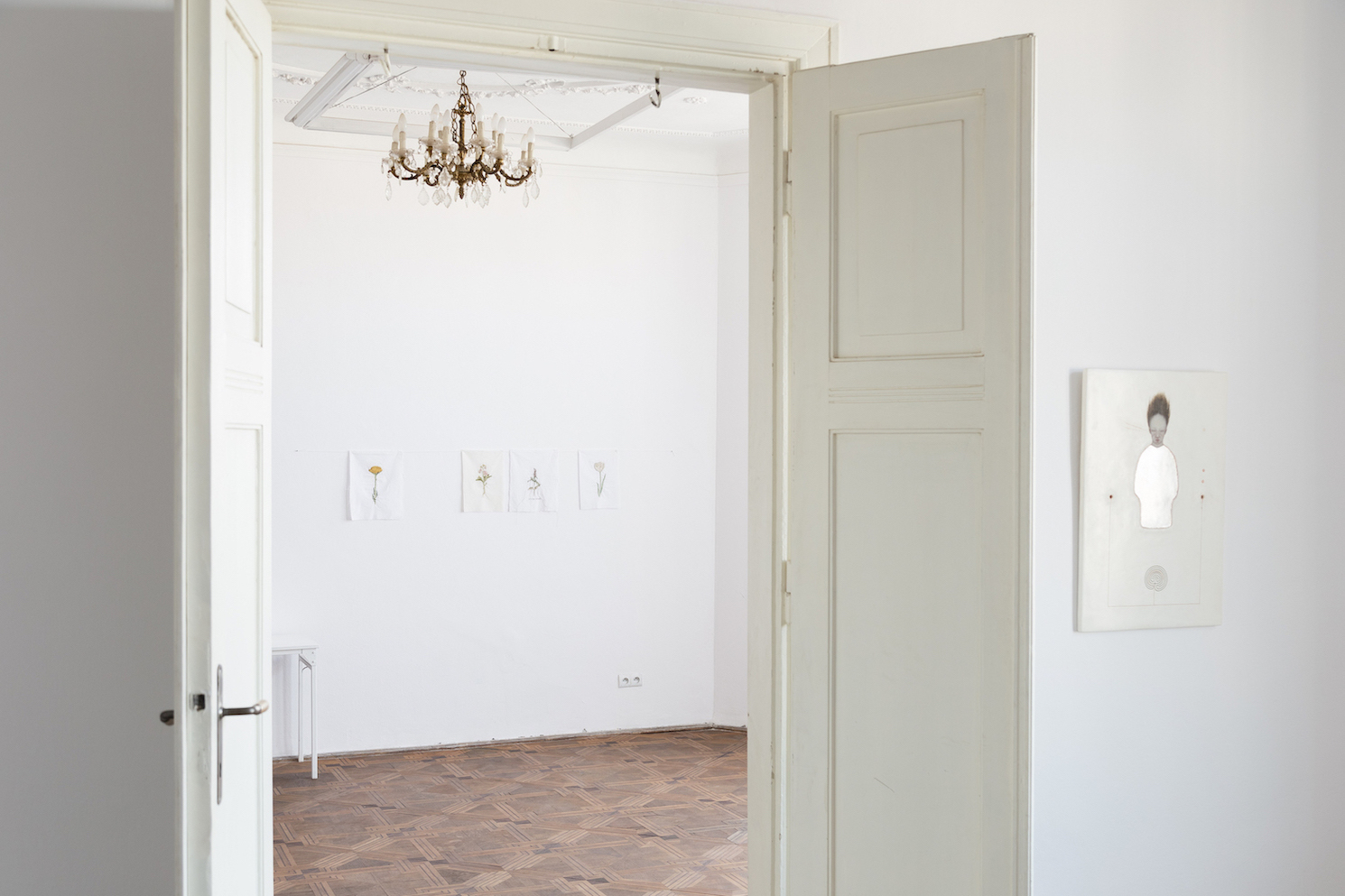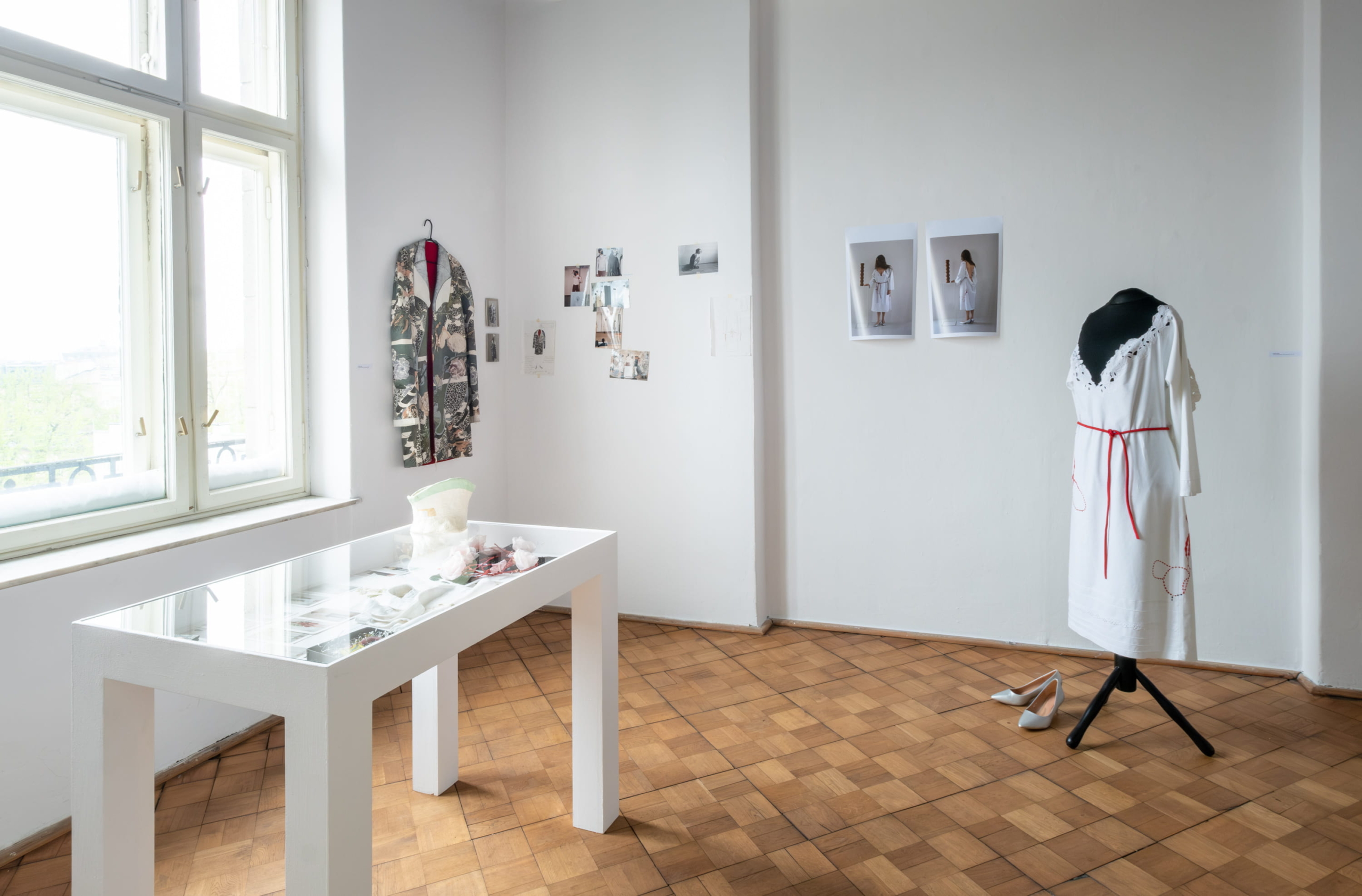Magdalena Moskwa
Magdalena Moskwa (ur. 1967) zajmuje się malarstwem, fotografią i haftem, a także tworzy obiekty-ubrania o nieużytkowym charakterze. W malarstwie, fotografii i obiektach interesują ją głębokie portrety psychologiczne, w których ciało jest formą relikwiarza – „puszką dla ducha”.
Jej wcześniejsze prace są dość bliskie „klasycznym” wizerunkom portretowym. Nie chodzi jednak o precyzyjne oddanie rysów twarzy, ale o wydobycie esencji i energii. Ludzie z jej obrazów są usztywnieni, a nawet „upakowani” w sztywne formy. Przy takim sposobie traktowania postaci, gdy ogólna forma jest spięta i powściągliwa, każdy najmniejszy gest – ruch ręki, pukiel włosów, drobne rany, rysy srebra w tle – nabiera znaczenia i buduje ekspresję obrazu. Z czasem obok wizerunków ludzi na jej obrazach pojawiły się fragmenty ciała: dłonie i zakamarki cielesności – uszy, pępek, oczy, tkanki, jelita, kosmyki włosów. Te pieczołowicie oddane „fragmenty” to w zamyśle autorki także portrety – bardziej intymne niż podobizny twarzy.
Wraz ze zmianą tematyki zmieniły się techniki malarskie. W 2004 roku płótno zostało zastąpione przez zaprawę kredową na desce, która pozwala autorce na swobodne traktowanie powierzchni, tak by dać złudzenie pulsowania, miękkości, ciepła ciała, wnikania w głąb obrazu, instalowania drobnych przedmiotów, włosów, błon, iluzorycznych powłok i organów. Obiekty-ubrania tworzone przez Magdalenę Moskwę to formy mentalnych kombinezonów, specjalnych kostiumów zbierających odciski ciała. Sztywne kurtki, które tworzy od 2008 roku, są rodzajem zbroi, która krępuje, ale i chroni, i odnoszą się bezpośrednio do formy wypukłych „koszul” z obrazów.
Magdalena Moskwa – bio
Magdalena Moskwa (b. 1967) deals with painting, photography, and embroidery, and creates objects-clothes of non-utilitarian character. In painting, photography, and objects she is interested in deep psychological portraits in which the body is a form of reliquary – “a can for a spirit”.
Her earlier works are quite close to the “classic” portrait images. But the point is not to give precisely the facial features, but to get the essence and energy. People from her paintings are stiffened and even “packed” in rigid forms. With this method of treating the characters, when the overall form is buckled and reserved, every little gesture – hand movement, lock of hair, small wounds, scratches of silver in the background – acquires meaning and builds expression of the image. With time, next to images of people, parts of a body appeared in her paintings: hands and crannies of corporeality – ears, navel, eyes, tissues, intestines, and strands of hair. These “fragments” depicted with care are also portraits, in the mind of the author – more intimate than facial likenesses.
The painting techniques had changed together with the shift in subjects. In 2004 the canvas was replaced by a chalk mortar on the board, which allows the author to relieve treatment of the surface in order to give the illusion of pulsing, softness, warmth of a body, penetration into the picture, and installation of small objects, hair, membranes, illusive coatings and organs. Objects-clothes created by Magdalena Moskwa are forms of mental suits, special costumes collecting imprints of the body. Rigid jackets which she has made since 2008 are a type of armor, which ties, but also protects, and they relate directly to the form of convex “shirts” from the images.






































